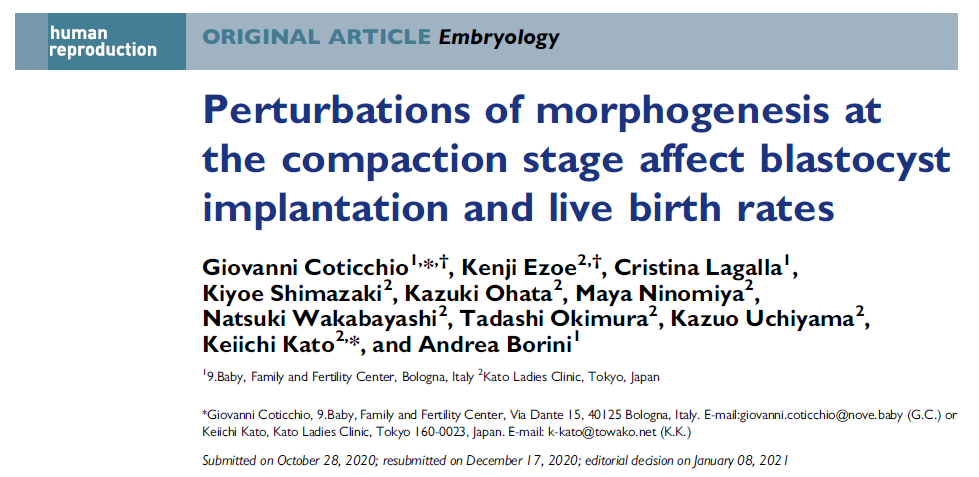Dr. Coticchio and Dr. Kato have recently published in Human Reproduction results from a study conducted in Kato Ladies Clinic, the largest IVF clinic in the world. They have analysed if perturbations of embryo morphogenesis at compaction affect blastocyst development and clinical outcomes in assisted reproduction cycles.
The study has involved the assessment of laboratory and clinical outcomes of 2,059 morula stage embryos associated with 1,117 ICSI patients, who were treated with minimal stimulation and single vitrified-warmed blastocyst transfer (SVBT) by employing a wide range of Kitazato products.
Oocyte retrieval was performed with Kitazato 21G OPU Needle and, collected and washed in the Laboratory with Kitazato HTF medium under Kitazato Hypure Paraffin Oil overlay.
Embryos were cultured to the expanded blastocyst stage and vitrified with the Kitazato Cryotop® Method and post-warming blastocyst survival was confirmed by re-expansion within two hours from start of culture.
Kato Ladies Clinic have achieved a blastocyst survival rate of 99.5% (45.580/45.816) over the last five years (2015-2019). Overall, 2,059 morulae (83.3% of fertilised oocytes) were observed, generated from 2,735 inseminated oocytes. Normally fertilised oocytes, cleaved embryos, and blastocyst were 2,473, 2,441, and 1,589, respectively, with a high rate of blastocyst formation per fertilised oocyte of 64.3%. About 1,255 blastocysts were cryopreserved, of which 1,083 were individually warmed and transferred with Kitazato ET Catheters in SVBTs. Clinical and ongoing pregnancy rates were 37.5% and 30.3%, respectively, while live birth rate was 24.6%.
Results have shown that the patterns of partial compaction at the morula stage affect blastocyst yield and quality and, ultimately, the chances to achieve a pregnancy and live birth.
One interesting highlight of this study is that blastocyst quality and post-implantation competence are influenced by the number of inner and outer cells during compaction. Authors have concluded that partial compaction might therefore reflect a trade-off between the disposal of affected cells to preserve overall embryo integrity and the partial loss of developmental competence.
Coticchio G., Ezoe K., Lagalla C., Shimazaki K., Ohata, K., Ninomiya M., Wakabayashi N., Okimura T., Uchiyama K., Kato K., Borini A. Perturbations of morphogenesis at the compaction stage affect blastocyst implantation and live birth rates. Human Reproduction, 2021. Link to the study.
